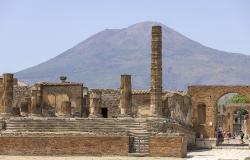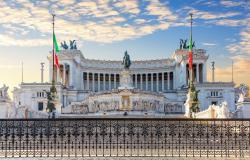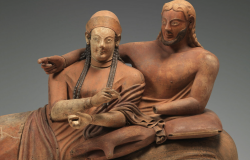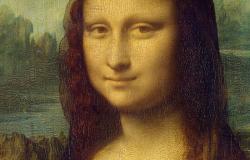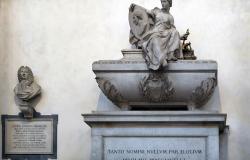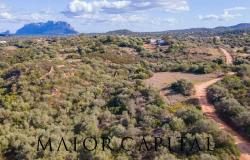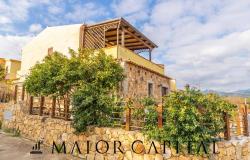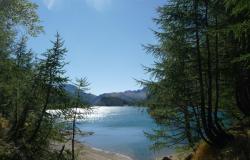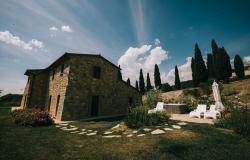Over the following paragraphs Scottish author Philip Paris brings us up to date with the story of the famous Italian chapel in Orkney, which was built by Italian POWs during the Second World War. They arrived on those windswept islands so far from home on 23rd February 1942. You can read here Part 1 and Part 2 of the story.
By 1958 the chapel was in a perilous state, with the seepage of water through the roof threatening Domenico Chiocchetti’s beautiful paintings and rusting the intricate wrought-iron rood screen made by Giuseppe Palumbi. However, fate played its hand (as it has so often in steering the destiny of the chapel) with the intervention of Father Joseph Ryland-Whitaker, the Catholic priest on Shetland whose remit extended that year to include Orkney.
He was alarmed at the state of the building and set about with great enthusiasm to form the Italian Chapel Preservation Committee, made up of local people. He was chairman, a position that has been held ever since by the local Catholic priest. Orkney tradesmen were hired immediately to carry out the repairs necessary to prevent any further damage, but the committee knew that the best person to restore the paintings would be the original artist.
 The story attracted the attention of the BBC, which subsequently broadcast a radio programme asking if any listener had information on the whereabouts of the Italians who had been involved in the building’s creation. In the whole of Britain there was only one couple with Domenico’s address. They had befriended him while he was in a camp in Yorkshire, prior to his repatriation, and happened to hear the request on their radio. Domenico’s daughter Letizia explains what happened next in Orkney’s Italian Chapel: The True Story of an Icon.
The story attracted the attention of the BBC, which subsequently broadcast a radio programme asking if any listener had information on the whereabouts of the Italians who had been involved in the building’s creation. In the whole of Britain there was only one couple with Domenico’s address. They had befriended him while he was in a camp in Yorkshire, prior to his repatriation, and happened to hear the request on their radio. Domenico’s daughter Letizia explains what happened next in Orkney’s Italian Chapel: The True Story of an Icon.
The BBC telephoned the town hall in Moena explaining that they were trying to get in touch with the artist who had painted the Madonna and Child in the chapel in Orkney. Of course, in those days, no one in a small village had a telephone in their home. A message was sent to my father to arrive at the town hall at a certain time so that he could take a telephone call from the BBC in England! He was very surprised and had not realised there was such interest in it that people would go to so much trouble to speak to him.
The BBC paid for the artist to return to Orkney for three weeks in 1960 and restore the paintings. At the end of this visit Father Whitaker held a service of rededication that was attended by around 200 Orcadians who represented a wide cross section of denominations. On the day of his departure Domenico handed over the following letter:
Dear Orcadians,
My work at the chapel is finished. In these three weeks I have done my best to give again to the little church that freshness which it had sixteen years ago. The chapel is yours – for you to love and preserve. I take with me to Italy the remembrance of your kindness and wonderful hospitality. I shall remember always, and my children shall learn from me to love you.
Madonna with Child - Domenico Chiocchetti
In 1964 Domenico returned to Orkney with his wife Maria and they brought with them the fourteen Stations of the Cross that can be seen on the walls of the chapel to this day. He returned again in 1970 with two of his children, who did indeed learn to love the chapel and the local people. On each occasion he carried out some repairs.
The chapel’s fame continued to grow and the ties of friendship between Orkney and Moena became cemented with exchange trips by school children, which have often included the grandchildren and Domenico and Maria.
In 1992 eight Italians who had been POWs in Orkney made an emotional return trip to the islands with their families. The widely publicised visit marked the fiftieth anniversary of their arrival. They were treated as honoured guests, with several nearby properties flying the Italian flag! Many ex POWs, or their descendents, have since made the trip to Orkney.
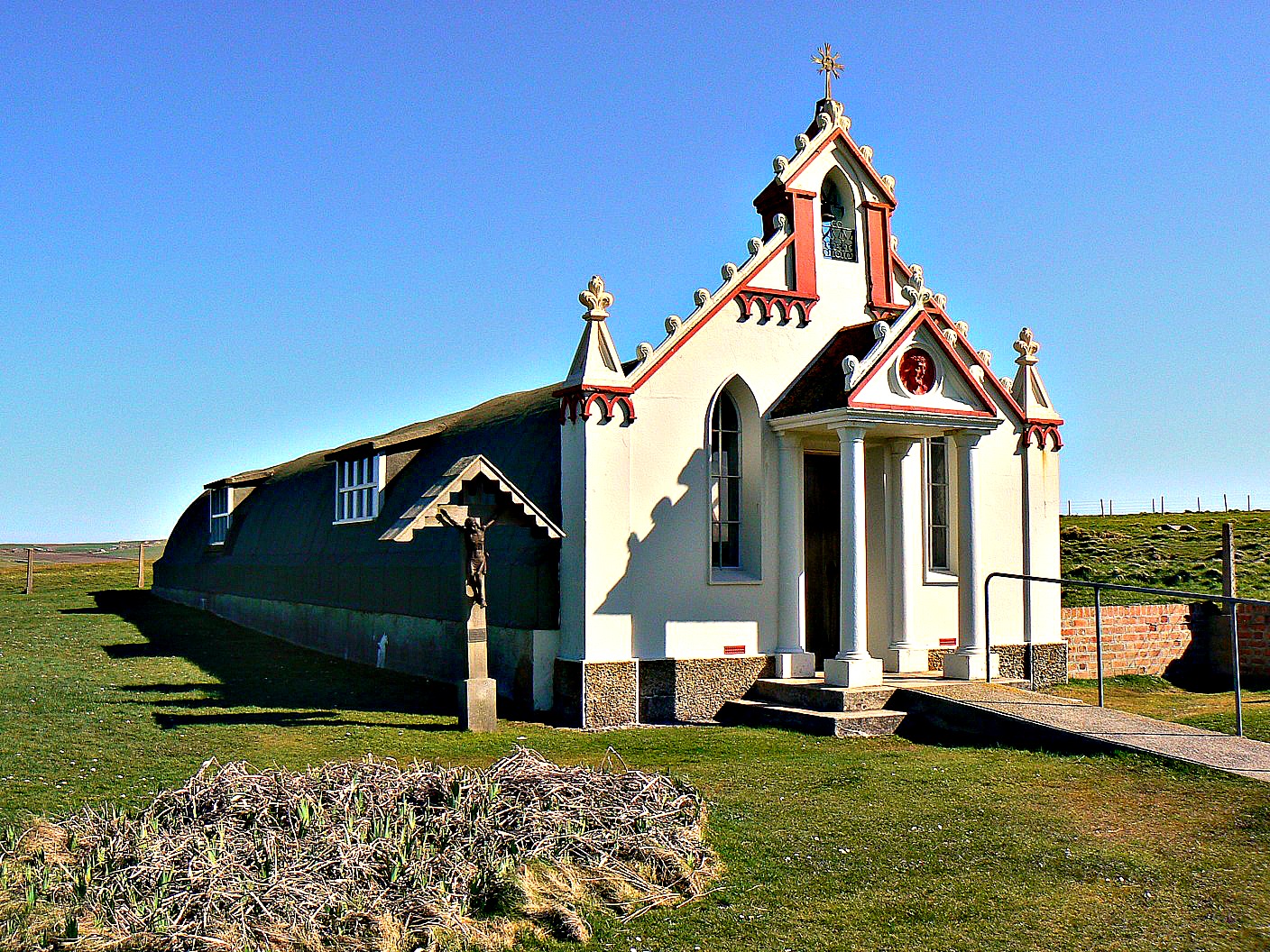
It’s difficult to convey in an article just how influential two Second World War Nissen huts, converted with scrap material and leftover cement, have been in the formation of friendships between people around the world from every conceivable background. Increasingly it is the next generation and the one after that are making new connections because of the vision and determination of a handful of men all those decades ago.
Alberto Pizzi, whose father was in Camp 60, spent a considerable time tracing the Chiocchetti family so that he could discuss and learn about the experiences of their respective fathers. Alberto said ‘The chapel is a moving, never-ending story.’

In the picture Gino Caprara and Philip Paris
During my research into the chapel’s history I got to know well Coriolano ‘Gino’ Caprara, who was a POW in Camp 34 on the Orkney island of Burray. Gino was ninety-two this month. In 2010 my wife, Catherine, and I travelled to Latina to meet him and his wife Amalia. It was a most extraordinary experience, which we will never forget.
Later that week we met the family of Giuseppe Palumbi. As well as the blacksmith’s son and grandson we met his granddaughter. She is named after the woman in Orkney who Giuseppe fell in love while he was a POW in Orkney. Our week in Italy was so moving that we spent much of it in tears, as did our most generous hosts!
In 2010 a men's choir from Tesero in the Dolomites sang in the Chapel built in Orkney by Italian Prisoners of War. Song: 'Siam Prigionieri'
The chapel preservation committee continue to look after the building. Around 100,000 visitors a year enter its door to gaze upon the wonders inside. You can feel the presence of those men who put so much of themselves into this creation. There are no facilities, no cafe, just a concrete statue of St George slaying the Dragon and an old Nissen hut, converted with salvaged materials, as well as enormous skill, dedication ... and love.
***
Philip Paris is author of the historical fiction – The Italian Chapel – and the non-fiction Orkney’s Italian Chapel: The True Story of an Icon.


